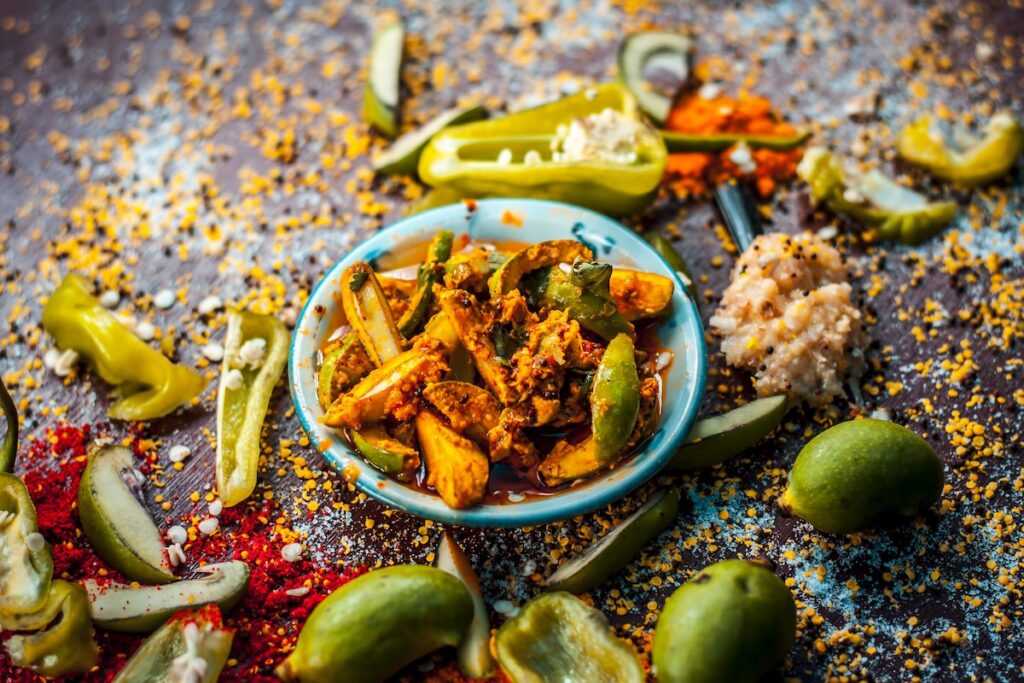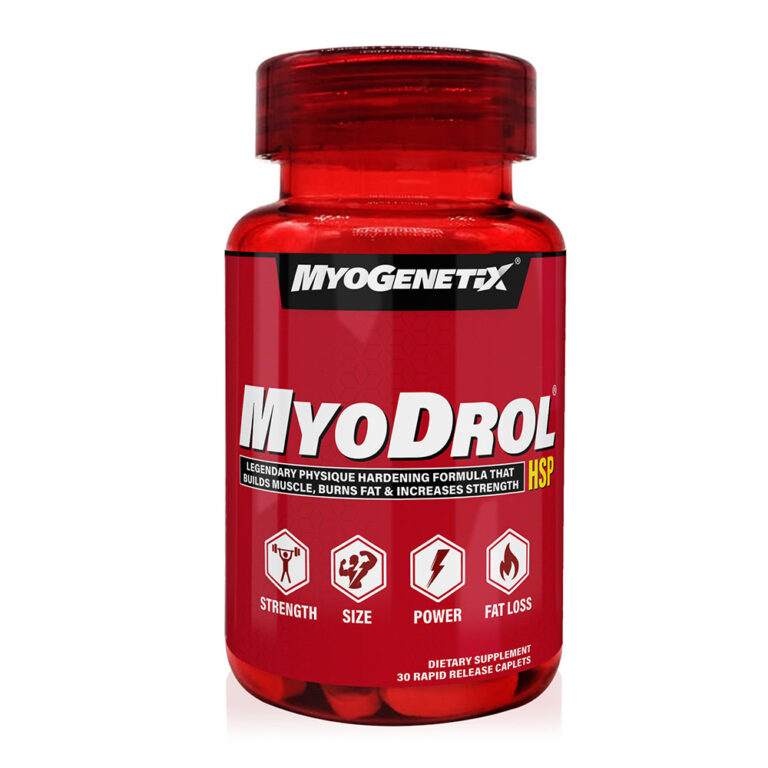“Indian pickles can be sweet, sour, salty, cooling, hot or very hot indeed, and add another taste dimension to a meal”
Colleen Taylor Sen, author “Feasts & Fasts: A History of Food in India”
“Mama, thhoda achar dena!”. We addressed our grandmother as ‘Mama’. No one knows why, probably because she was above mom, so double mom i.e. MaMa. Anyways, my memories with are quite clear, and her cooked food, still invokes the taste in my mouth.
Though, there is much to discuss about her, but her mango pickles were the talks of the house. I never bothered to learn painstakingly how she made them, but I remember, relishing a big piece of mango pickle from the large Martaban (ceramic) jars, she placed on the top of the kitchen shelf, away from everyone’s reach.
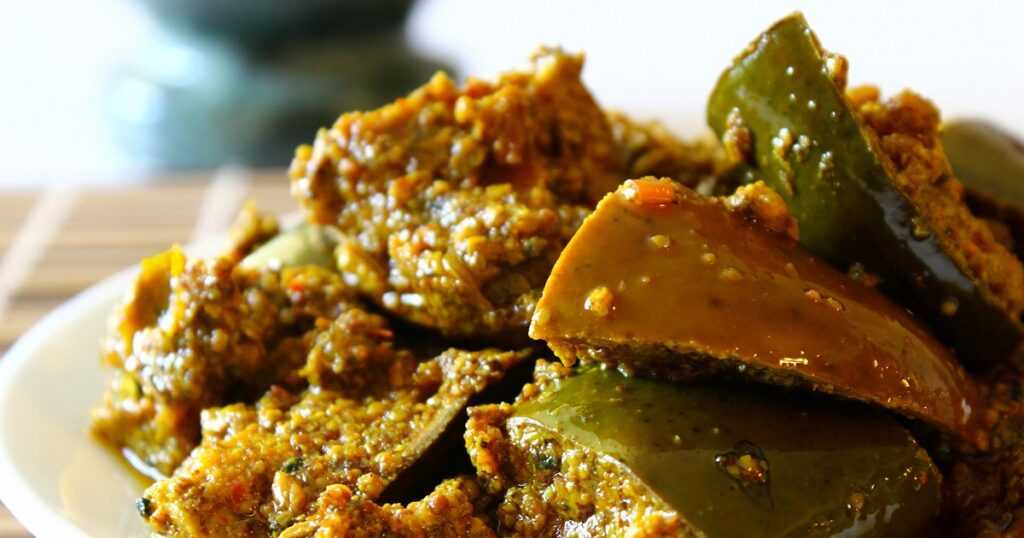
Pickling is an ancient form of food preservation and there are historical evidences to suggest it was followed by the ancient Indians, Egyptians and Chinese. But today, pickling is a culinary art, which is practiced around the world. Pickle has formed an integral parts of our lives, since millennia, and today, around the world, there are number of ways in which pickle is relished:
- Ireland – corned beef
- Scandinavia – pickled herring
- Korea – kimchi
- Japan – miso pickles etc.
- China – salted duck eggs , Zha Cai
- India – chutneys & achar
- Lebanon – Pickled Eggplant Stuffed with Garlic
Singapore, Indonesian and Malaysian pickles, called acar, are typically made out of cucumber, carrot, bird’s eye chilies, and shallots, these items being seasoned with vinegar, sugar and salt. Fruits, such as papaya and pineapple, are also sometimes pickled. In the Philippines, pickling was traditionally done in earthen jars and is widely known as buro or binuro. In Vietnamese Cuisine, vegetable pickles are called dưa muối (“salted vegetables”) or dưa chua (“sour vegetables”).
Apart from that, pickle is relished around the world in countries like Iran, Turkey and various Arabian countries; in European nations like Hungary, Poland, Romania, Czech Republic, Russia, Ukraine, Bulgaria, Serbia, Macedonia, UK, US, Canada, Mexico etc.
When we talk about the Indian cuisine, it plays a vital role in enhancing the flavour of the meal. In fact, in India, most meals are incomplete without pickle by the side. Indians living or travelling abroad are famous (sometimes infamous) for carrying their pickle jars with themselves. They can enhance the flavour of any dish, by adding a dash of pickle by the side.
Indians have various named for pickle, Uppinakaayi in Kannada, Pachadi in Telegu, Urukai in Tamil, Uppillittuthu in Malayalam, Loncha in Marathi, Athanu in Gujarati and Āchār in Hindi.
Indians relish a variety of pickles. Pickles in India are of three basic types: those preserved in vinegar; those preserved in salt; and those preserved in oil. In India, oil is a popular medium used for pickling. For e.g. mango pickle is one of the most commonly consumed pickle in India, and in North, the people use mustard oil to prepare mango pickle, whereas in south, sesame oil is used, this is along with many different preparation methods, using variety of spices, oil and different varieties of mango.
In his book A Historical Dictionary of Indian Food, the late food historian KT Achaya, notes that pickles fall into the category of ‘cooking without fire’. “A Kannada work of AD 1594, the Lingapurna of Gurulinga Desika, describes no less than 50 kinds of pickles,” states Achaya.
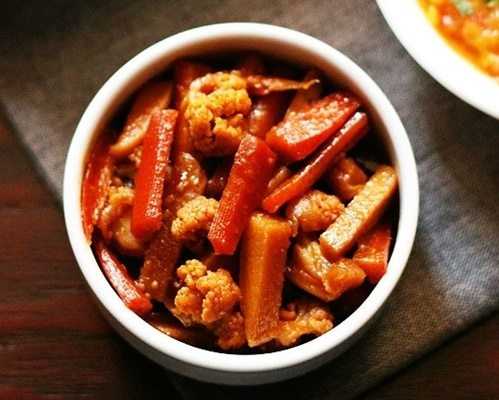
In the northern state of Haryana, Panipat is famous for being the hub of making commercial varieties of tasteful achar. Single main ingredient varieties prepared with mango, chilli and lemon are ever popular, but the city is famous of pachranga (literally ‘five colours’, prepared with five vegetables) and satranga (literally ‘seven colours’, prepared with seven vegetables) which are matured in mustard oil using main ingredients such as raw mangoes, chick peas, lotus stem, karonda and amlas or limes, pickled with whole spices. Pachranga achar was first created by Murli Dhar Dhingra in Pakistan in 1930, his Dingra and Malik descendants brought it to India in 1943.
Today there are many industries making a variety of pickles around the globe. Although the process of pickling was invented to preserve the foods, but today people enjoy the amazing flavour it imparts. Pickling also enhances the nutritional value of the food, by introducing B vitamins produced by bacteria. However, pickles are mostly packed in glass bottles due to their rigidity, inertness, non-toxicity, durability, compatibility and indigenous availability. The glass packaging imparts long shelf life to pickle due to its inertness and impermeability to moisture and gases.
To know more about the amazing pickles in India and their recipes I would highly recommend you to read the self-published “Usha’s Pickle Digest”, written by Usha Prabakaran, also called the ‘Pickle Queen of India’. She, in 1998 self-published her book, after rejection from various publishers. Usha has mentioned over 1,000 recipes in her book.
Shortly after she printed her book, Prabakaran, a former lawyer from Chennai, learned that she had a brain tumour. At the hospital, Prabarakan learned that a rare fungus had lodged itself in the front of her brain. She needed surgery to remove the tumour, and long periods of rest to recover. The book, however, was not forgotten and developed a cult like following.
PICKLING AS FOOD PRESERVATION
Food preservation techniques from times immemorial have contributed in maintaining the quality and characteristics of food items for an extended period of time. Ancient civilizations used to store perishable food items in air tight containers such as clay jars to keep the food away from air and moisture, thus slowing the spoiling process. Drying fruits, vegetables and meats was one of the major techniques used by the ancient people.
Salting the fruits and vegetables was also known, which was often practised during the middle ages for preservation. The major concern pertaining to food preservation was concentrated to overcome the huge burden on seasonal crop production and unavailability of certain food crops throughout the world. At present, food preservation techniques depend on drying, salting, sugaring, pickling, canning, refrigeration and smoking.
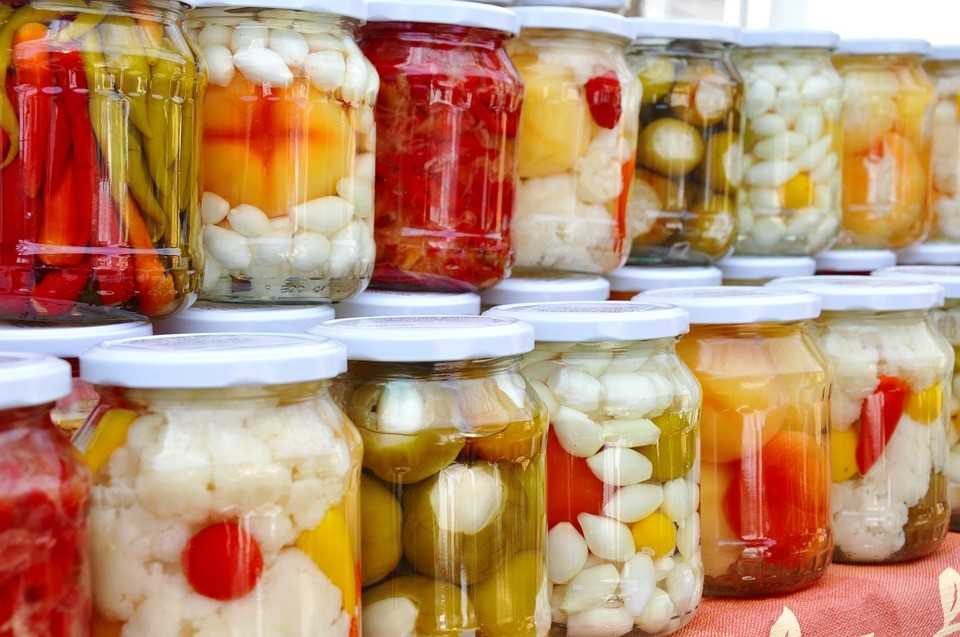
Various vegetables, fruits, meats etc. are important to their inexpensiveness and valuable nutrient contents. Since these food products are perishable, there is necessity of processing and preservation for future use. Fortunately, most perishable foods can be made stable and acceptable by the judicious application of present day technology.
There are several methods for processing of these vegetables. Among them pickling is one of the best methods for processing of these vegetables and it can be used whole the year round. When any food (fruits, vegetables, fish or meat) is preserved by natural salt or vinegar or oil, then the processed food is called pickles. Pickles are good appetizers and add to the palatability of a meal.
Pickling is the oldest and useful method which is used for the preservation of food by anaerobic fermentation or immersion in the vinegar and resulting food is called pickle. The word pickle is derived from Dutch language “pekel” which mean brine. Pickle is fermented food which contains various vegetables (beans, carrot, mango, green tomatoes, pepper, cabbage etc.) and spices while additives are added for the taste improvement. Sweet, vinegar, salt and oil pickles are very common commercial manufacture varieties.
Fermentation is the oldest method of pickling, where a naturally occurring bacterium transforms the sugars present in the ingredient into an acid, and though they take as many as five weeks to cure, they last up to 2 years. They have a very sharp flavour and their texture is somewhat softer than other types. Fermentation is the controlled decomposition of food.
In the case of fermented pickles, salt controls the pickle’s texture, limits unwanted micro-organisms, and ensures ingredients. Fermentation is the best process for growing acidity in fruits and vegetables. The nature of fermentation will depend upon the nature of food, the types of microorganism present and environmental conditions affecting their growth and metabolic patterns.
Commercially, fermentation of vegetables can be done by sodium chloride (NaCl). NaCl serves two primary functions in the preservation of vegetable fermentation; it regulates the type of microbial activity, and it prevents softening and other degradative changes in the tissues. Fermentation of vegetables not only improves their flavour but also make them more nutritious and easier to digest.
A distinguishing characteristic is a pH of 4.6 or lower, which is sufficient to kill most bacteria. Pickling can preserve perishable foods for months. Antimicrobial herbs and spices, such as mustard seeds, garlic, cinnamon or cloves are often added.
The art of making pickles is known as ‘pickling’ and it has been an integral part of all the communities and cultures across the globe for millions of years. The principle objective of pickling is to delay the spoilage and contamination of food stuff by natural microflora. Moreover, the addition of some ingredients like spices in the pickling process enhanced the flavour and nutritive value of the end product.
Pickling involves preserving the food stuffs under low pH condition using brine, vinegar or other acid. Due to low pH and high acid contents, food items can be successfully bio-preserved for more than 2 years without refrigeration.
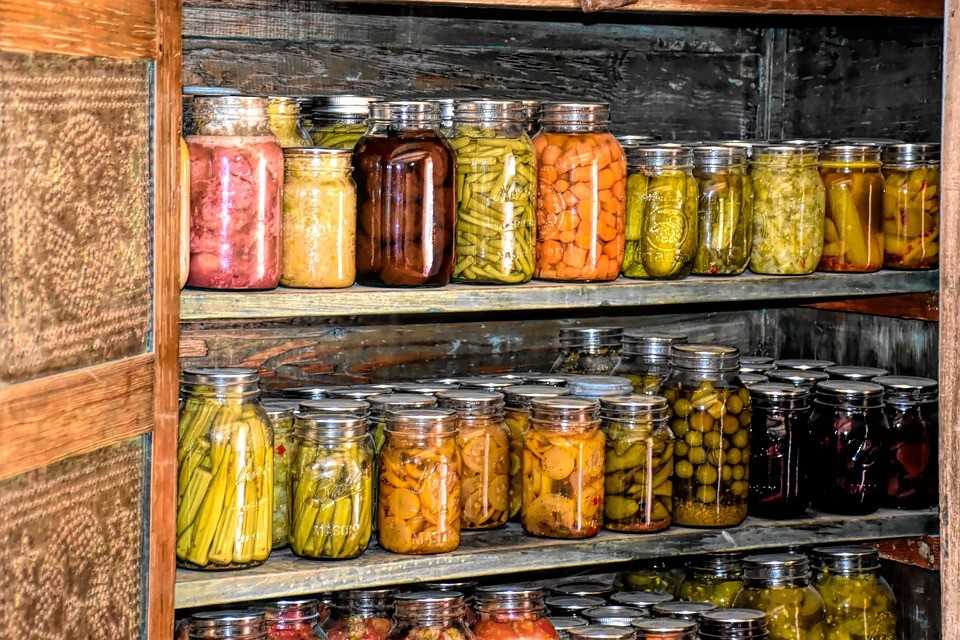
Lactic acid bacteria are used for the conversion of sugar into acid. Salt plays main role in the fermentation process and is used to drawing out nutrients and water from the vegetables which are used as ingredients while salt is also used as substrate for the growth of lactic acid bacteria. In pickling process sugar is converted into acid (lactic acid) at acidic condition, and because of this acidic medium pathogen and aerobic spoilage microorganism’s growth is inhibited.
Due to pickling process texture and flavour of pickled vegetables are changed and after pickling show firm texture, translucent appearance and longer shelf-life. Pickling process is used to preserve the vegetables for long time. Vinegar and vegetable oil is used as pickling medium in Asia. Pickles contain phytochemicals and minerals which come from ingredients (Vegetables and spices).
Pickling is done basically in two ways, one includes pickles preserved in vinegar, a strong acid in which few bacteria can survive. The other category includes pickles soaked in brine to encourage fermentation—the growth of “good” bacteria that make a food less vulnerable to “bad” spoilage- causing bacteria. The fruits or vegetables to be pickled are then added to the jar along with either brine or vinegar or both, as well as spices, and are then allowed to ferment until the desired taste is obtained.
The food can be pre-soaked in brine before transferring to vinegar. This reduces the water content of the food which would otherwise dilute the vinegar. This method is particularly useful for fruit and vegetables with high natural water content. Spices and condiments used in the pickles, apart from imparting flavour, have inhibitory effect in the growth of micro-organisms. Aerobic bacteria and mould growth are prevented by covering the top with oil. Vinegar pickling is common in regions where temperatures are too high to make salt pickles.
Pickles may contain onion, garlic, ginger, sugar, salt, jaggery, edible vegetable oil, green or red chillies, spices, spice extracts or oil, lime juice, vinegar, citric acid, dry fruits, and nuts.
THE HISTORY OF PICKLES
The exact origin of pickling is uncertain, but according to the archaeologists and anthropologists it dates back to 2400BC, when the ancient Mesopotamians were believed to know the art of preservation of fruits and vegetables. The process of pickling found its true relevance around 2030BC, when the cucumbers brought from far fledged locales of Indian sub-continent were preserved in the Tigris valley and thus initiated a new tradition.
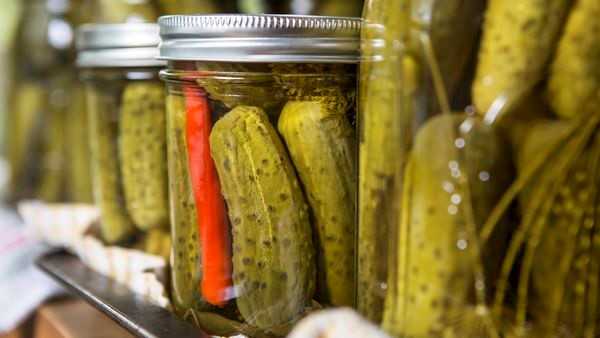
Acc. to some sources, pickles were believed to have curative properties that were even mentioned by the Greek philosopher Aristotle (384-322BC). Roman emperor Julius Caesar (100-44BC) is also said to have been fond of pickles. It is believed that, before a battle he fed pickle to his men, which he believed would give them physical and spiritual strength.
Roman emperor, Tiberius (42-37BC) was said to be a lover of cucumber pickles, and had them with his meals every day. Later in the history, famous explorers like Christopher Columbus & Amerigo Vespucci, stocked their ships with pickles to solve the problem of food scarcity and prevent the outbreak of scurvy due to lack of vitamin C.
Famous Moroccan traveller & writer, Ibn Battuta (1304-1377), when visited India in the 14th century, wrote about the everyday life of Mughal king Muhammed Bin Tuglaq: “The fruit is about the size of a large damask prune, which when green and not quite ripe, of those which happen to fall, they salt and they preserve them just as lemon is preserved with us. In the same manner, they preserve ginger when it is green, as also pods of pepper and this they eat with their meals”.
Author Reay Tannahill, in his book Food in History, stated that, the ancient Egyptians used to even pickle small birds in brine, for a few days, and ate them as it is thereafter.
Acc. to Jan Davison, author of ‘Pickles: A Global History’, in ancient China, pickled vegetables sustained workers building the Great Wall; and in much of Europe, pickled fish, cabbage and cucumbers once formed the mainstay of the diet – so much so that the Lithuanians created Roguszys: the god of pickles. The 2nd physician Galen recommended pickles to counter phlegm, stimulate the appetite and aid digestion.
Davison found that, when we speak about salt pickles, China is considered the birthplace of fermented salt pickles. From China the technique spread across Asia. The Koreans took salt- fermented Chinese (nappa) cabbage and added chillies to create their fiery kimchi. The Japanese embraced methods from both, added more of their own, and today boast at least seven principal pickling techniques. In the West, notable salt pickles include herrings, cabbage (sauerkraut) and cucumbers.
In the Indian sub-continent, especially in the Himalayan and adjacent belts, pickle is popularly known as ‘achar’ and generally no meal is complete without a smidgen of pickle. Pickles are often consumed along with main course dishes and act as good appetizer and digestive agent. Fish and meat are also used for storage in the form of pickle. Moreover, the pickles instantly add some extra taste, flavour and texture to the usual fruits and vegetables.
Author Jan Davison, states in his book, The science of Ayurveda – ‘life knowledge’ – had established the value of pickles in the diet around 600BC. This decreed that a balanced meal comprised six basic rasas or tastes: madhura, sweet; amla, acid; lavana, saline; katu, pungent; tikta, bitter; and kashaya, astringent. More than fifty pickles are described in a sixteenth- century Kannada manuscript known as the Linga Purana of Gurulinga Desika (1594).

Researchers in a study, explored the different forms of pickles that are prepared and consumed by the various communities of the Himalayan and adjacent hilly regions of the Indian sub-continent, mostly because the population in this area is rural, often geographically isolated and also distinct in their food habit, culture and tradition; they discovered some amazing facts.
They found that, in Himalayan and adjacent belts, the lifestyle of people is very simple and so is reflected by their simplicity in food habit. The staple food of an average individual in this region is basically bhat/chawal, dal and tarkari (rice, pulses and vegetables); and often bhat is replaced by roti/ chapati. Occasionally, the main meal is supplemented with fish or meat items; but pickles or achar are an inseparable addition to an average meal which adds flavour and value to the meal served. In fact, pickles have been an indispensable part of the social rituals of different ethnic communities.
Researchers found that, the pickled products found in the Himalayan regions are hugely diverse in terms of ingredients being used. Preparation of pickle in its true sense is an art that has been nurtured by these communities for ages which is evident from the fact that each and every individual of a family is somehow associated with the preparation process.
Several modifications have been made during ages accordingly in different cultures based up on the availability of raw materials. A wide range of local herbs and spices are mixed with the raw ingredients and preserved in mustard oil and lime juice. For e.g. bamboo shoots, dried caterpillars, ginger, garlic, various fish and meats, lemon, mango, radish, cauliflower, chilis, onions, gooseberry and various other fruits and vegetables (These fruits/vegetables are generally mixed with some other ingredients such as salt, spices, and vegetable oils and left to mature).
Pickling of food items developed gradually as a method of preservation and practically preservation of almost all the type of raw and fresh perishable items have been practised by the people of this region. Pickling has been used to preserve not only the agricultural produces, but also several wild edible plants have been pickled owing to their medicinal and beneficial properties.
MYTHS SURROUNDING PICKLE
Pickles are consumed in little amount, generally a teaspoon or a bit more, alongside the main meal. It’s rarely consumed in large amounts and that’s why the effects it has on the body are quite limited in nature.
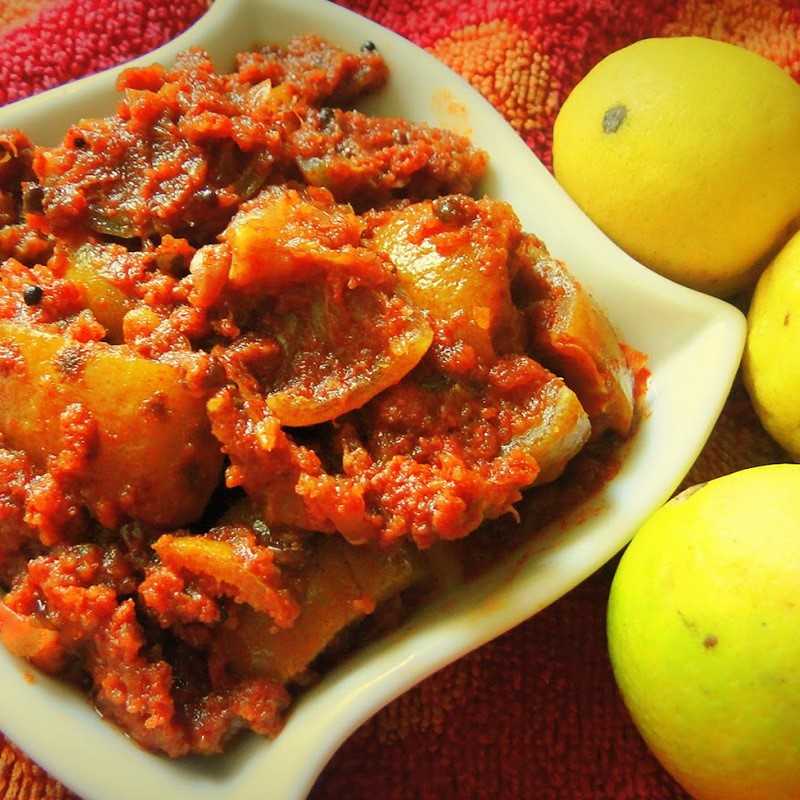
Researchers in a study, checked the effect of different nutraceuticals on antioxidant activity, total phenolic contents, total flavonoid contents, antidiabetic activity, sensory evaluation and heavy metals of mixed vegetable pickles. For the preparation of mixed vegetable pickles (carrot, green chili, lemon, bitter gourd and turnip), spices and mustard oil were purchased from local market of Faisalabad, Pakistan. The results of the study showed that the mixed pickle which contained more medicinal plant powders showed excellent antioxidant activity, total phenolic and flavonoid contents, antidiabetic activity and sensory evaluation.
Author Jan Davison, in his book states that, naturally fermented pickles are a rich source of beneficial probiotic microbes and essential vitamins and minerals. Analysis of Korea’s traditional pickled cabbage, kimchi, has revealed that 1g contains around 800 million bacteria which help maintain a healthy gut, aid digestion and promote good health more broadly. Nutritional studies of kimchi and sauerkraut, first associated with preventing scurvy in the eighteenth century, have shown that fermentation preserves the vitamins found in fresh cabbage, including vitamins A, B, C and K.
Despite of the amazing taste, a deep history and health benefits of pickle, there are suddenly some health myths cropping up against pickles. Now, the ones pertaining to cancer have not been substantiated and proven in studies. Despite of extremely clear evidence and research, many so called self-proclaimed nutrition experts, have tried to demonize pickle based on two aspects i.e. the use of mustard oil and salt.
Now, multiple times in various studies it has been proven that mustard oil is not just safe, but unrefined mustard oil is one of the healthiest oils, and especially beneficial for Indian cooking.
Again, when it comes to salt & its relation to hypertension, it’s very clear, how salt (sodium) may be an issue with hypertensive patients, but its only excess, and it’s virtually impossible to take in excess salt from home food. The excess salt is always through junk from outside, and it has multiple other health issues, apart from excess sodium.
But when it comes to pickle, the scare is absolutely unwarranted. Let’s see how:
WHO recommendation for intake of salt per head per day is 5gm. The sodium in 5gm salt is app. 1938mg.
The average salt you would find in Indian pickles per 100gm is app. 8-20gms. The exact amount can vary.
Now, if you consume a tablespoon of pickle a day (most people consume a teaspoon or so), then the amount of pickle would be app. 15-18gms a day.
So, the amount of salt they would consume would not cross 1-2gm a day.
The amount of sodium in 1-2gm salt is 400-800mg which is well within limits of daily sodium consumption.
That’s the reason pickle is being relished around the world since thousands of years, in almost all the cultures, in one form or the other, without any health issues.
